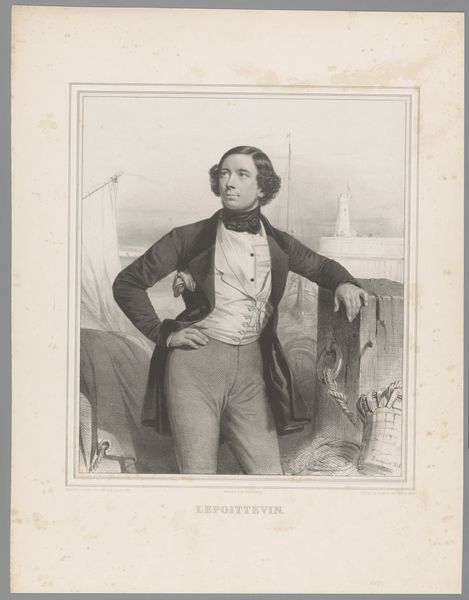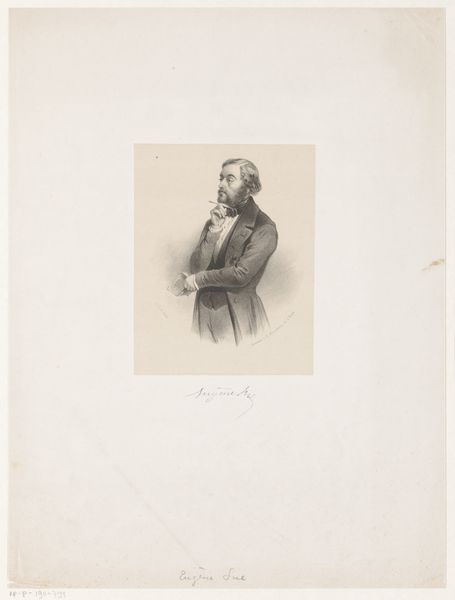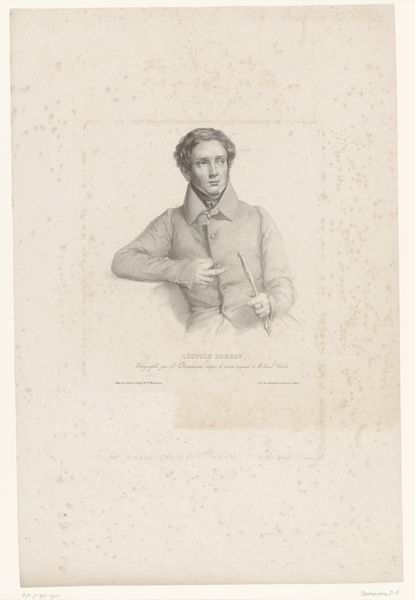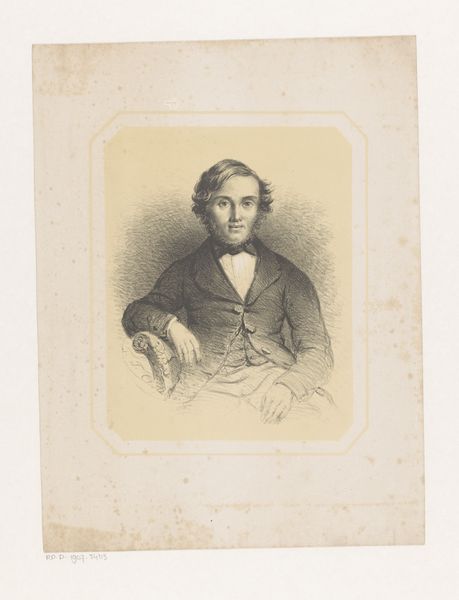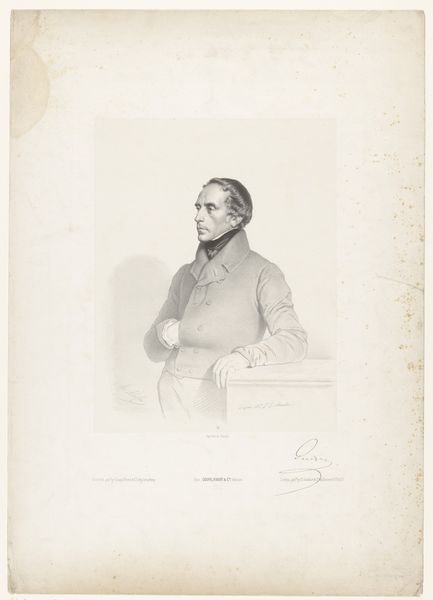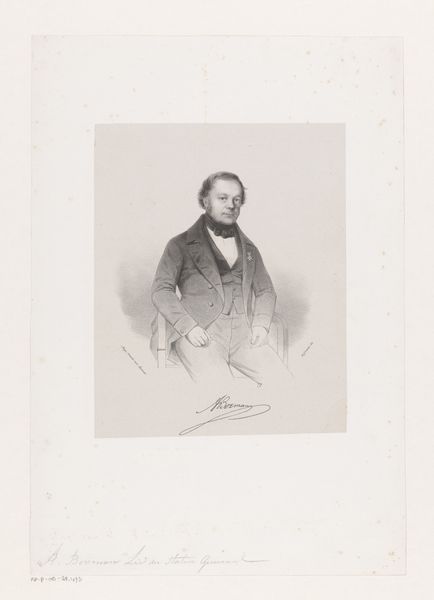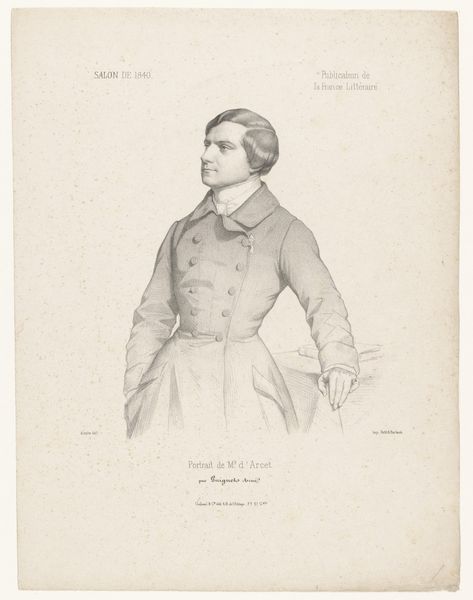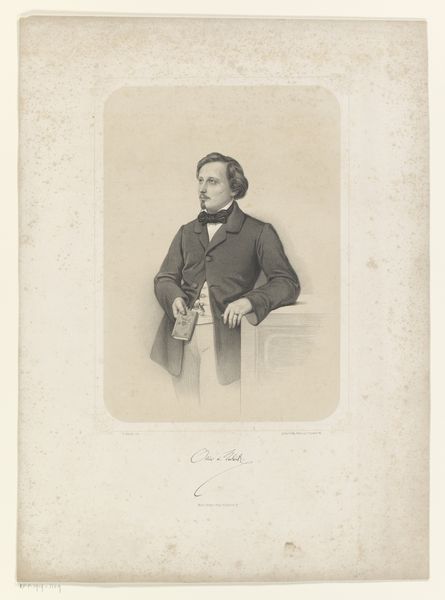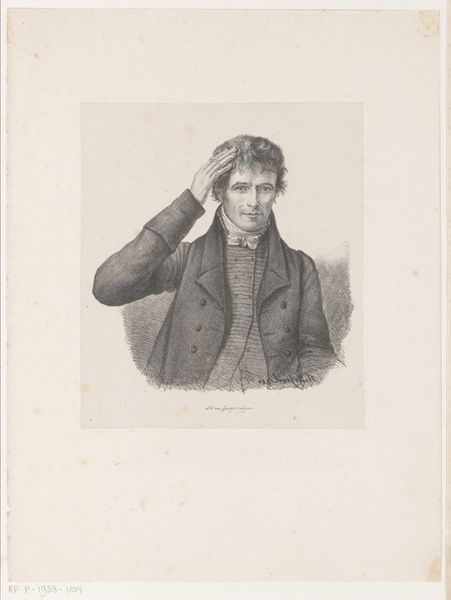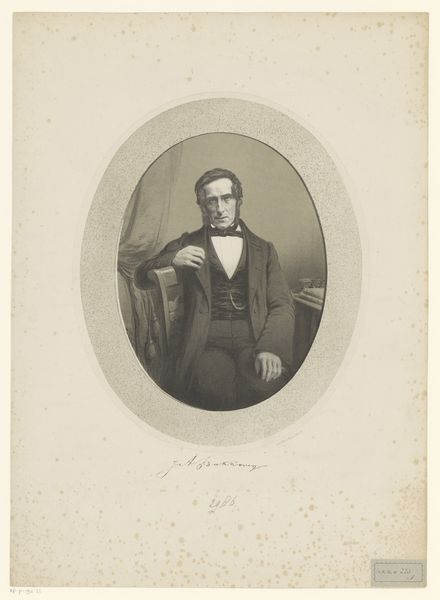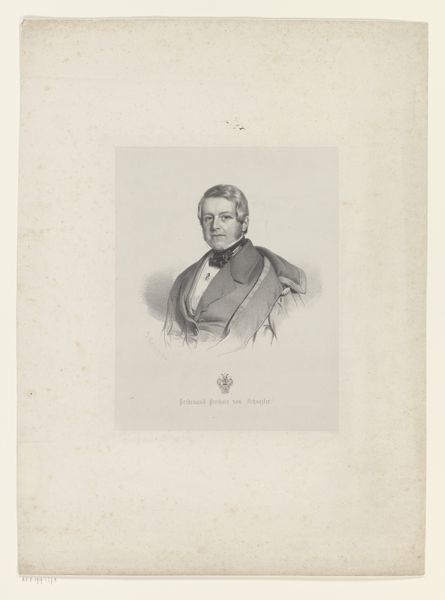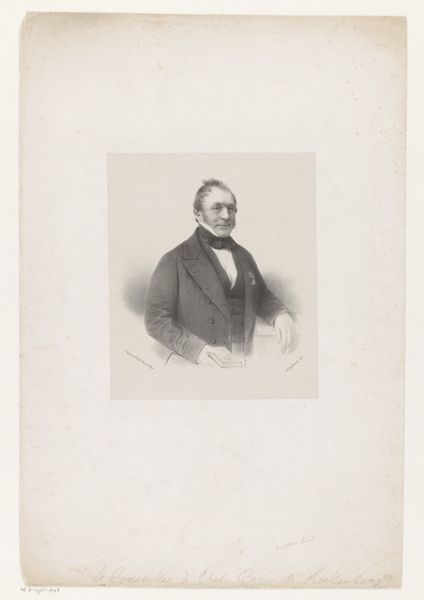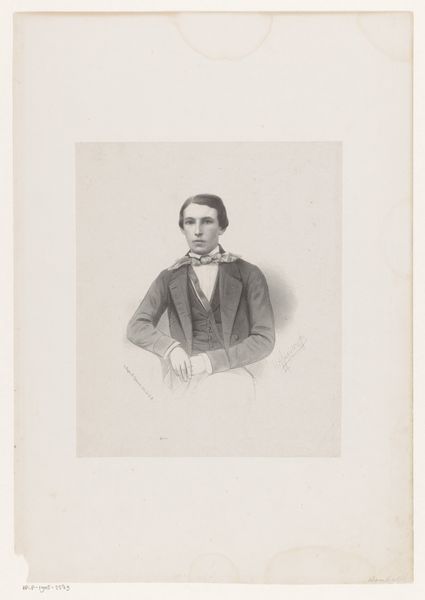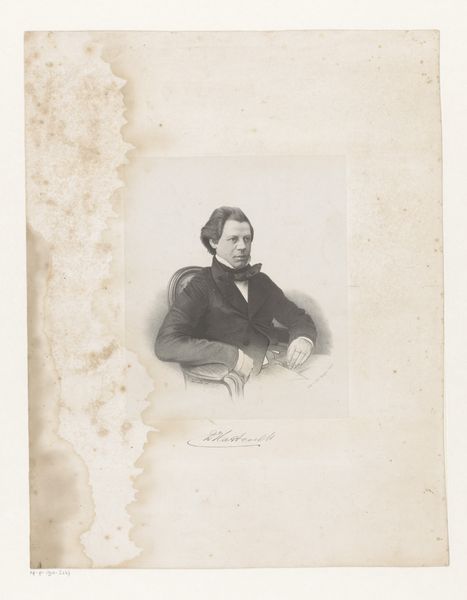
lithograph, print
#
neoclacissism
#
lithograph
# print
#
realism
Dimensions: 571 mm (height) x 400 mm (width) (bladmaal)
Curator: I find myself immediately drawn to the dramatic contrast in this lithograph. It's called "Professor Georg Frederik Ursin," created in 1858. Editor: The stark blacks and greys certainly convey a sense of seriousness, almost a somber mood. I'm curious, what can you tell me about Professor Ursin? He seems rather imposing, standing there with such assuredness, directing our attention to that drawing. Curator: Indeed! Ursin was a prominent figure – a mathematician and astronomer. His stern pose is fairly representative of Neoclassical ideals, really projecting power and authority. Consider how the globe acts almost like an aura behind him. Editor: Absolutely. That globe places him within a wider world of knowledge. And it occurs to me, his assertive gesture might also hint at the growing importance placed on scientific reasoning during the 19th century. It also reminds me that the so-called scientific revolution in the early modern period may not have necessarily led to equity. Think of the people who had not benefitted or been included in knowledge practices or institutions. Curator: Good point. Now consider his attire: the meticulously ruffled shirt, the tailored vest and coat... these communicate not just wealth, but also adherence to specific social codes. Each element acts as a symbol of his position within society. Notice too, how his index finger directs you away from him as the powerful authority onto his thinking, and his legacy, written on the canvas of mathematical endeavor. Editor: Exactly. The symbols here present a dominant narrative—the white male intellectual as the purveyor of knowledge. While acknowledging the artistry of this lithograph, we should critically examine the image in relation to power structures and historical exclusion. Curator: It’s through that visual language—the codes of dress, gesture, and the surrounding objects—that this print communicates far more than just a likeness. It constructs a carefully curated image of power. Editor: So it does! Looking at it from this perspective is essential for questioning the inherent biases embedded in our visual culture, past and present. Thanks for illuminating this print. Curator: My pleasure! I find that such images encourage reflection on how we represent—and perhaps mythologize—our figures of authority, even today.
Comments
No comments
Be the first to comment and join the conversation on the ultimate creative platform.
